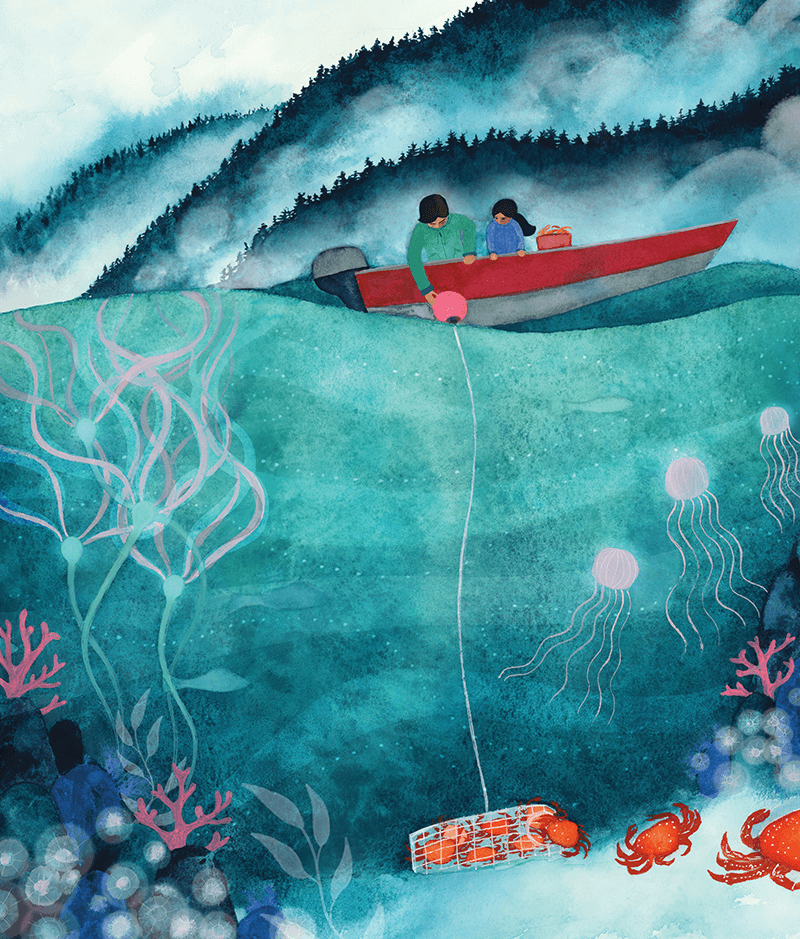
Born and raised in Juneau, Alaska, Michaela Goade, 27, works as a freelance graphic designer and illustrator with a special interest in illustrating children’s books. Here, she describes current projects, her love of the southeastern Alaskan landscape, and why preserving Native Alaskan culture is more important than ever.
“Children’s book publishing is a big industry, but in Alaska, there are Native corporations that have received grants to do educational literacy programs with Native or shareholder artists. I’m a member of the Tlingit tribe of southeast Alaska, so I’ve been working with them on a couple of books. It’s been a dream project because it’s depicting what I know and love, which is southeast Alaska, and promoting educational outreach to tell beautiful, traditional stories.
The first story I illustrated is called Salmon Boy. It is one of the better-known stories from the oral tradition, and the publisher got a respected elder to trim it down to kid-friendly length. What’s really beautiful about the Tlingit language—and I don’t speak it myself, language preservation is also one of their missions—it uses a lot of metaphors. There’s a gray area between reality and the spirit world—there is no clear line between the two.
Salmon Boy will be printed in Tlingit with English beneath it. I think they first wanted to do it just in Tlingit but realized that people don’t know how to speak it. Having the English definitely helps, and it’s pretty huge to have a story like that published in a nice, high-end book. When I grew up in the school system here—there was a lot of racism, as there is in many places. The history in Alaska is more recent than in other places, so even my dad remembers a lot of terrible things that happened growing up in Juneau. There are still colonial tensions—everyone’s trying to figure it out as they go. Language preservation is a large movement within the Native corporations, and that’s exciting to see. Native corporations bring instructors into elementary schools on a rotating basis to try to teach these young children, to start introducing them to the idea of this indigenous language that was here before them. I wish we had these books when I was a kid.
The second book isn’t a traditional story, it’s a poem titled Let’s Go! written by a woman in town about the cycle of subsistence and harvesting off the land, like berry picking and crabbing—just a few select activities that were essential to the culture then and also today. From what I remember growing up, I would pick berries with my mom and my sister, and go out in the boat fishing with my family.
I get most of my inspiration for my art, if not all, from the landscape and the culture. The Alaskan landscape is so varied; it’s part of the Northwest, but it’s its own type of style. Most of southeastern Alaska is in the Tongass National Forest, which is a huge coastal temperate rainforest. You get these beautiful, dramatic coastal landscapes, and then you get your typical Alaskan glaciers and mountains. But also within that, the forest is so alive and it bursts in the spring. Even in the winter, it’s still green. Dense forests full of moss. When it’s foggy, it can be mysterious—it’s very gray, and I find those days the most beautiful.”


